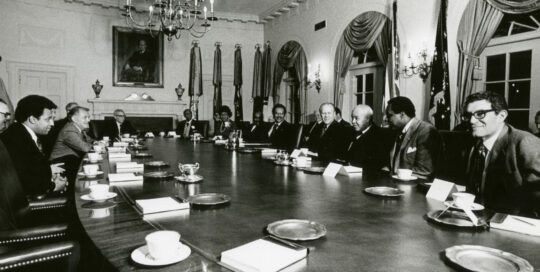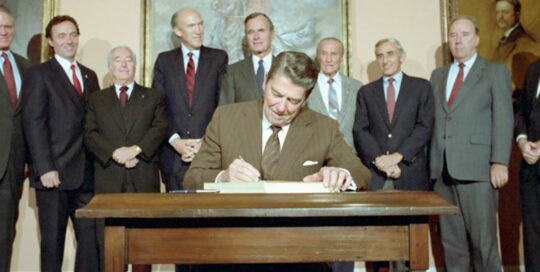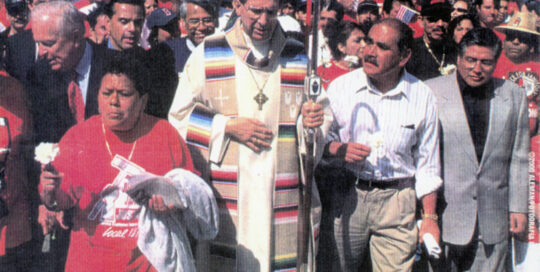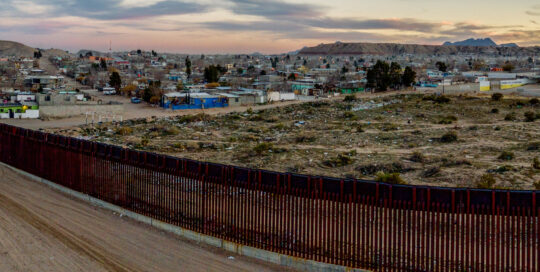Immigration Reform and The Church
As migration became a contentious issue beginning in the early seventies and has remained so to the present, the Catholic Church has been actively involved in education efforts and crafting political solutions to this challenging phenomenon. Efforts to preserve family unity and protect human dignity has remained at the center.
For questions, comments, or follow up on this module, please email Todd Scribner, USCCB/MRS’ Assistant Director of Education, at TScribner@usccb.org
On November 6, 1986, President Ronald Reagan signed into law the Immigration Reform and Control Act, which focused on unauthorized immigration, immigration enforcement, and what to do with the several million unauthorized migrants living in the United States. It was the end point of a more than decade long effort to grapple with an uptick in illegal immigration. In response, the reform bill provided a legalization process for – potentially at least – millions of unauthorized migrants and implemented new enforcement mechanisms that aimed at reducing future flows of illegal migration. Four years later, the Immigration Act of 1990 focused on revising pathways for legal migration and introduced new programs through which individuals could come to the United States and start a new life. Despite reforms introduced in 1986 and 1990, within a few years immigration reemerged as a pronounced political issue that initiated significant debate.
For several decades since, leadership in the Catholic Church urged the passage of additional immigration legislation that would reaffirm the centrality of family unity in the immigration system and exemplify respect for the innate value of the human person. Unfortunately, reform efforts have fallen victim to a growing partisan divide that has continually stymied passage of any workable, bipartisan solution. This module, and its attendant lessons, will provide a broad overview of some of the conditions that contributed to our contemporary migration situation, explore efforts to secure immigration reform, and highlight some the logic used by the Catholic Church in their advocacy and education efforts on this issue.
Learning Objectives:
- Promote an understanding of some of the key historical, political, economic, and social conditions that have given rise to contemporary debates on migration in the United States;
- Describe some of the ways in which Catholic leaders and the broader Church have engaged efforts to achieve immigration reform; and
- Understand some of the key features that Catholic leaders have long held should be a part of any immigration reform.
Last Revised February 21, 2023
Lesson 1: The 1970s, Illegal Immigration, and the Emergence of a “Problem”
Immigration again becomes a politically contentious issue in the early 1970s, but political efforts to deal with it effectively fell short.
Lesson 2: The Immigration Reform and Control Act and its Aftermath
Immigration reform is finally in reach with the passage of the Immigration Reform and Control Act.
Lesson 3: From 9/11 to Strangers No Longer: Together on the Journey of Hope
Text: 9/11 foiled efforts to pass immigration reform, but the US and Mexico Bishops persist and publish Strangers No Longer, calling for fundamental reform.
Lesson 4: The Ongoing Need for Immigration Reform
Since the publication of Strangers No Longer to the present, efforts to achieve immigration reform have been pursued and found empty.
Additional Resources for Immigration Reform and The Church
The resources included here are intended to help inspire discussion on the issue of immigration and immigration reform.





